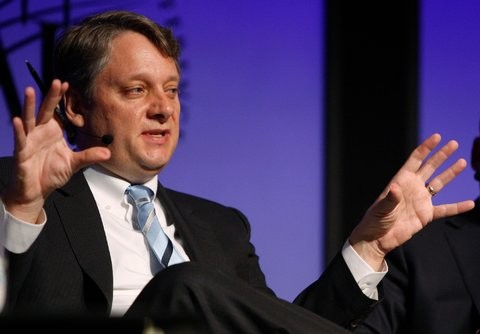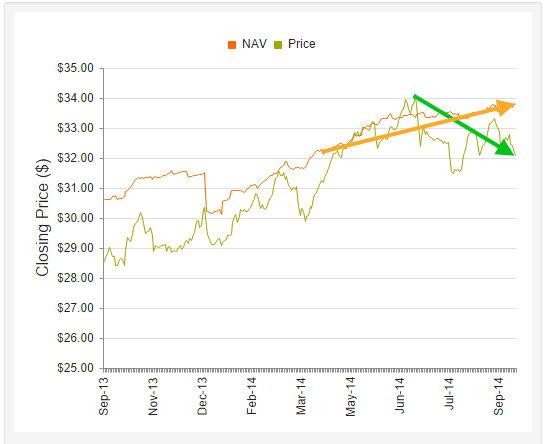Pimco Investor Consider This Before Bailing_9
Post on: 6 Июль, 2015 No Comment

The ‘Big Squeeze’ Begins
- Current European Central Bank policies, along with the regulatory environment, are constricting the two primary investment vehicles available to store cash.
- As many money market funds have maxed out the risk they can take and some regional European banks have started to charge the equivalent of negative rates on deposits, large cash investors are left to ponder how to avoid the potential loss of capital.
- We believe PIMCO’s approach to balancing three key cash management trade-offs ‒ mark-to-market volatility, counterparty risk and capital erosion ‒ may provide an attractive solution for investors.
Article Main Body
Corporate treasurers and others with large cash holdings have watched the walls close in around them for years. It is only in the past couple of months, however, that their gradually disappearing room for manoeuvre has turned into a suffocating constriction. So begins the “Big Squeeze”, the European Central Bank’s (ECB) engineered assault on savings. Pushing back against those walls is futile; however, we believe there is a way for investors to escape this stranglehold on cash and breathe a little easier.
Traditionally, there have been two primary investment vehicles available to store cash: money market funds (MMFs) and bank deposits. Both eliminate mark-to-market (MTM) volatility, removing uncertainty associated with market gyrations via a fixed net asset value (NAV) structure. This is a great benefit for anyone who has better things to focus on than the daily price fluctuations of their cash. Unfortunately, we believe neither vehicle is fit for this purpose any longer.
The even bigger concern, however, is the very survivability of European-domiciled MMFs. Over the past five years, the industry has shrunk by 40%, and new European regulations, set to be voted on next year, could accelerate the trend toward extinction. The European Parliament was set to pass a set of MMF regulations in March 2014 that would have dealt a mortal blow to the industry, essentially making MMFs too unprofitable to run, and far less attractive for investors. Fund providers would have had to invest 3% of their own capital in order to run MMFs, something nearly no asset manager is willing ‒ or able ‒ to do. And investors would be subject to gating, limited withdrawals during times of stress, something that runs against the very purpose of MMFs. The European Parliament’s vote was pulled at the last minute in the hope that a successor bill, to be voted on by a future parliament, will be watered down. It may not be. Therefore, if for no better reason, cash holders may want to establish a contingency plan now in case their MMFs may no longer exist in a few years.
Bank deposits
What about bank deposits? Although they continue to offer investors a healthy spread over MMF yields, returns are rapidly declining, with a lag (see Figure 1).
According to an article in The Economist, aptly titled “Saving in Germany: Worse than nothing” (8 November 2014), a regional bank in Germany recently began charging negative yields for large depositors. The longer money market yields remain near zero or go negative, the more common this could become.
Again, however, the bigger concern with bank deposits stems from new regulations. Take, for example, the European Union’s (EU) new bank resolution regime, set to be implemented in January 2016, with some member states opting to be early adopters. The statute prohibits governments from providing deposit guarantees as they have done in the past. Under the new rules, if a bank gets into trouble, it must first bail-in subordinated and senior creditors, including large depositors, before it is allowed to access official government support. Put another way, the counterparty risk that large depositors face is about to soar. For this reason, expect to see rating agencies continue to issue waves of quality downgrades for European banks in coming quarters as these banks lose what the rating agencies call “government uplift”, the increase in creditworthiness that resulted from implicit government backing in times of emergency.

The not-so-great escape
There is, however, a way to escape the Big Squeeze. It involves a little extra effort from cash holders, but not much.
Most cash holders have traditionally prioritised the elimination of MTM volatility, followed closely by reducing counterparty risk, to the exclusion of other considerations. However, today’s low-yield, regulatory-overhauled landscape demands a reassessment of this balance of trade-offs. Not only will the counterparty risk of bank deposits rise, a third consideration has surfaced that has not existed before: capital erosion owing to negative interest rates. By stepping out of traditional cash management vehicles and into floating NAV portfolios, admittedly permitting some degree of MTM volatility, corporate treasurers may be able to limit capital erosion, potentially a much bigger concern, while still remaining focused on reducing counterparty risk (see Figure 2).
At PIMCO, we have a rigorous framework for balancing these three trade-offs ‒ MTM volatility, counterparty risk and capital erosion ‒ that we employ for our own portfolios, and for many of the largest corporate treasury departments in the world (see Figure 3).
- The first step involves projecting cash requirements over time. While most cash may be held for precautionary purposes, some treasurers have clarity over future cash requirements that extend out months, if not years. This can be exploited.
To summarise, our framework is a methodical approach to balancing the three trade-offs: mark-to-market volatility, counterparty risk and capital erosion. The goal is to limit counterparty risk and reduce the threat of capital erosion, offset by a risk-managed increase in MTM volatility.
We realise this might represent outside-the-box thinking for some. The alternative is to remain boxed in without breathing space by the ECB and other financial regulators.














